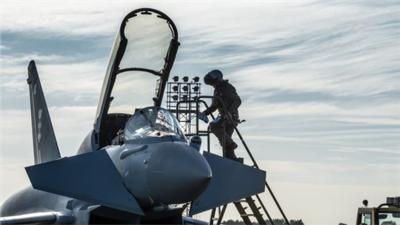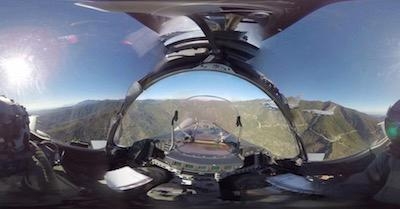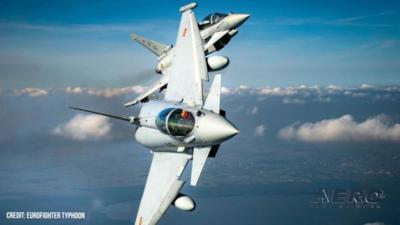Eurofighter Manufacturing Awaits New Orders, As Skilled Techs Are Assigned Elsewhere
Over in the United Kingdom, tempers flare over BAE Systems’ handling of Eurofighter Typhoon production, with one group calling upon the government to place orders for a 4th tranche of fighters to keep the whole thing afloat.

At the moment, production of Typhoons has ground to a halt, as British union Unite says. With no outstanding domestic or export orders for new combat aircraft, they say “hundreds of workers have had to be transferred to other factories or RAF bases. It’s understandable for BAE Systems to put their skilled people to work wherever it’s profitable, but Unite general secretary Sharon Graham doesn’t think this pause will be all that temporary, in the end.
“Workers at BAE and across the whole UK defence and manufacturing industry will be looking at the ending of the Typhoon final assembly production at Warton and asking how a government promising to turn defence spending into ‘British growth, British jobs, British skills, British innovation’ could let it happen.”
"I have repeatedly told government ministers how much is at risk in terms of jobs, skills, and national security if we stop assembling our own fighter planes. But instead of future planning and ensuring skilled workers are ready to produce the next generation of fighter jets (Global Combat Air Programme, or GCAP), they still seem content to sit on their hands while those skills begin to wither and die.”
"The MoD must now urgently announce its commitment to the Typhoon with an order for the latest, cutting-edge T5 Typhoons to replace the aging RAF fighters being retired. A failure to do this could destroy a generation of aerospace workers and would amount to an act of national self-harm."

Unite national officer Rhys McCarthy said His Majesty’s government had given them the impression that “export orders could fill the gap until GCAP but none have been forthcoming. This is hardly surprising since the government doesn’t have enough faith in the plane to buy itself yet expects foreign countries to.”
The UK’s defense landscape has of course been lightly shaken up by events further East, as has the rest of Europe. Things are a bit messy, at the moment, with American enthusiasm for foreign intervention lukewarm at best, and competitors the world over looking to scoop up fighter deals wherever they can. Unsurprisingly the purse strings seem to be a little tight whenever it comes to legacy fighter procurement, with stealth, drones, and improved SAM performance looming in the background. Instead, bureaucrats would rather spend money on fancy new 6th-gen aircraft like the F-35 Lightning II, or… as far as anything on the open market is available, the F-35, unless they’re willing to stake bets on a future 6th gen fighter of their own. The UK is doing just that with the GCAP, a joint project between them, Italy, and Japan that will supposedly end in a domestically produced, stealth fighter. But, as any fan of warbirds in the jet age has seen, futuristic programs often end in a quiet
stillbirth, with nothing more than glossy 3D renders on some posterboard when all’s said and done. For defense, the Eurofighter Typhoon may be older, but it’s at least a real and extant aircraft today. The GCAP, going by the current timeline, should enter service in 2035, with first demonstrator flights to come in 2027. Those estimates are often pretty optimistic, from what we’ve seen in similar fighter programs in recent decades.

McCarthy closed exhorting the purchase of more Eurofighters: “This is an act of self-sabotage that will wreak havoc with the aerospace workforce across Lancashire and a UK wide supply chain that supports thousands of jobs. The government needs to place an order for new Typhoons yesterday.”
 ANN's Daily Aero-Term (07.10.25): Performance-Based Navigation (PBN) [ICAO]
ANN's Daily Aero-Term (07.10.25): Performance-Based Navigation (PBN) [ICAO] NTSB Prelim: Cessna 172
NTSB Prelim: Cessna 172 ANN's Daily Aero-Linx (07.10.25)
ANN's Daily Aero-Linx (07.10.25) Classic Aero-TV: The Big Business of Diminutive Powerplants
Classic Aero-TV: The Big Business of Diminutive Powerplants Airborne 07.11.25: New FAA Bos, New NASA Boss (Kinda), WB57s Over TX
Airborne 07.11.25: New FAA Bos, New NASA Boss (Kinda), WB57s Over TX





